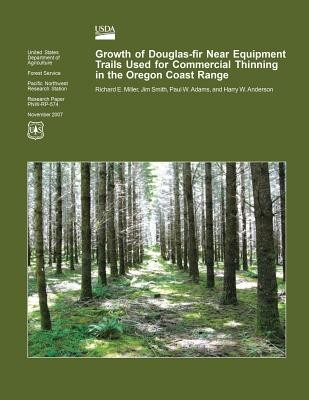
- We will send in 10–14 business days.
- Author: United States Department of Agriculture
- Publisher: CreateSpace Independent Publishing Platform
- ISBN-10: 1508798281
- ISBN-13: 9781508798286
- Format: 21.6 x 28 x 0.2 cm, softcover
- Language: English
- SAVE -10% with code: EXTRA
Growth of Douglas-fir Near Equipment Trails Used for Commercial Thinning in the Oregon Coast Range (e-book) (used book) | bookbook.eu
Reviews
Description
Soil disturbance is a visually apparent result of using heavy equipment to harvest trees. Typical types of soil disturbance from ground-based harvest include displacement, rutting, and compaction. Subsequent consequences of soil disturbance to growth of trees, however, are variable and seldom quantified beyond short-term effects. Despite a persistent need to further quantify tree response to soil disturbance, policies and practices intended to reduce or avoid soil disturbance from logging have been widely adopted on both public and private forest lands in the Pacific Northwest (Adams 2005).
EXTRA 10 % discount with code: EXTRA
The promotion ends in 18d.07:02:47
The discount code is valid when purchasing from 10 €. Discounts do not stack.
- Author: United States Department of Agriculture
- Publisher: CreateSpace Independent Publishing Platform
- ISBN-10: 1508798281
- ISBN-13: 9781508798286
- Format: 21.6 x 28 x 0.2 cm, softcover
- Language: English English
Soil disturbance is a visually apparent result of using heavy equipment to harvest trees. Typical types of soil disturbance from ground-based harvest include displacement, rutting, and compaction. Subsequent consequences of soil disturbance to growth of trees, however, are variable and seldom quantified beyond short-term effects. Despite a persistent need to further quantify tree response to soil disturbance, policies and practices intended to reduce or avoid soil disturbance from logging have been widely adopted on both public and private forest lands in the Pacific Northwest (Adams 2005).


Reviews